Over the past decade I had visited Colombia on two occasions, and both times the reason was bike races. So it shouldn't be surprising that it was once again a race that brought me down here almost two weeks ago via a direct flight from Miami to Cali. On my previous visits this big city at the eastern edge of the Andes had eluded me, and so I was looking forward to spending about a week in a new place.It was another Tissot UCI Nations Cup to which I had been assigned, after my recent track experience in Milton, Canada. And just like a few weeks ago I was joined by Andrew, from Canada, while the third crewmember was my old friend Juan, from Mar del Plata in Argentina. Together we spent most of our waking hours at the velodrome, an open-air facility that has hosted events as important as the 2014 World Championships.
Our hotel, the Dann Cali, was located about 20 minutes away, and we made the trip twice a day for morning and evening sessions. Our driver, Francisco, had also picked us up from the airport (CLO) and was our liaison with the local organizers. Good guy! The four days of competition were exciting, with racers from all over the world. I love to walk around the infield and check out the bikes, the demeanor of the athletes, the colors of the kits, the smell of the embrocation. My job gives me access to all parts of the velodrome, but it also means that I really can't strike up a conversation with a mechanic or a soigneur to satisfy some question that has suddenly popped into my head. That's one of the few drawbacks of my discreet role at these races, this lack of approachability.
Track races generally have morning and evening sessions, and most of the work needs to be done in the evening because that's when the finals of the various events are scheduled. That meant that one of us was free to abscond for one of the morning sessions, giving all of us a chance to do a bit of exploring. Of course, since I had arrived one day before the official start of the competition I had already had an opportunity to go for an extensive walk along the Rio Cali, which runs roughly from west to east through the northern parts of the city. Our hotel, the Dann, was located just steps away from the river corridor.
The Rio Cali is fed by the precipitation in the mountains on the western edge of town. It is a clear-running, fast mountain stream that turns brownish right in the middle of town where several small tributaries add iron-laden water to the main stream (see the above photo). First I thought this was pollution, but it definitely is iron ore that colors the water red. Both sides of the Rio Cali are lined by thick stands of bamboo and old trees that provide shade from the sun. Walkways lead along the river, and homeless people use the river to bathe. Walking upstream, toward the zoo, the still-clear river quickly becomes more narrow and wilder; farther downstream, the banks become wider and the pedestrian infrastructure increases from narrow paths to boulevard-like esplanades. It's a very attractive part of the city.
One of my very favorite aspects of this river corridor was the Gato del Rio area. It was all started back in 1996 when the Colombian artist Hernando Tejeda cast a huge three-and-a-half meter tall bronze statue of a cat and it was installed right by the park. It became the focal point of an assemblage of cat statues that line the river along a half-mile stretch. Various artists have adorned these fiberglass cats in all sorts of manner, and it is simply a happy place. (And if you look closely while walking though the city, you will see more "stray cats" even if actual felines are rather rare.)
Cali teems with art. There are diverse statues in public squares and in front of hotels, but the real joy comes from looking at all those colorful murals that you see everywhere. Instead of senseless graffiti that mar so many cities worldwide (and of course, those exist, too) thematic murals adorn walls in all parts of town that I visited. In the old San Antonio neighborhood, which was close to the Dann and through which I passed on one of my walks, at least a quarter of the houses feature some sort of painting.
We have all heard the scary stories about Colombia and the narcos, and I don't want to diminish the problems of the past and that undoubtedly still exist. However, I have to say that I have always felt safe in Colombia, and that included my trip to Medellin as well as this one to Cali, both well-known for their drug cartels. I went on all my walks during daylight hours, but my excursions did take me through neighborhoods that many would consider iffy. On my morning off I took a walk through a poorer area than that surrounding the Hotel Dann, the Barrio Siloe just a kilometer west of the velodrome. I had been attracted by the bustling street life and multitude of shops on our daily drive to the velodrome, so I took the opportunity to explore.
Instead of fancy boutiques that one can find in the more "gringo" areas of town, here it is the typical hardware stores, farmacias, auto and bike repair shops, barbers, and everything in between that characterize the street scene. Curvy mannequins on the sidewalks advertise the latest local fashion in body-realistic ways while next door a grimy mechanic takes apart an alternator. Vendors with pushcarts peddle everything from fresh fruit to plastic buckets, aided in their enterprise by car-battery-operated megaphones.
Track races generally have morning and evening sessions, and most of the work needs to be done in the evening because that's when the finals of the various events are scheduled. That meant that one of us was free to abscond for one of the morning sessions, giving all of us a chance to do a bit of exploring. Of course, since I had arrived one day before the official start of the competition I had already had an opportunity to go for an extensive walk along the Rio Cali, which runs roughly from west to east through the northern parts of the city. Our hotel, the Dann, was located just steps away from the river corridor.
One of my very favorite aspects of this river corridor was the Gato del Rio area. It was all started back in 1996 when the Colombian artist Hernando Tejeda cast a huge three-and-a-half meter tall bronze statue of a cat and it was installed right by the park. It became the focal point of an assemblage of cat statues that line the river along a half-mile stretch. Various artists have adorned these fiberglass cats in all sorts of manner, and it is simply a happy place. (And if you look closely while walking though the city, you will see more "stray cats" even if actual felines are rather rare.)
 |
| Oops, this one didn't belong here! 😂 |
We have all heard the scary stories about Colombia and the narcos, and I don't want to diminish the problems of the past and that undoubtedly still exist. However, I have to say that I have always felt safe in Colombia, and that included my trip to Medellin as well as this one to Cali, both well-known for their drug cartels. I went on all my walks during daylight hours, but my excursions did take me through neighborhoods that many would consider iffy. On my morning off I took a walk through a poorer area than that surrounding the Hotel Dann, the Barrio Siloe just a kilometer west of the velodrome. I had been attracted by the bustling street life and multitude of shops on our daily drive to the velodrome, so I took the opportunity to explore.
A side street took me away from the cacophony of all those sounds to the quiet of a large cemetery. I always find it intriguing to see how the dead are put to rest in different parts of the world, and this cementerio was not as colorful or elaborate as I would have assumed. Bodies are not interred but rather rest in mausoleums that are reminiscent of apartment blocks that are identified by letters and numbers. Outside of the cemetery walls little tykes played league soccer while their parents sat under the trees, patiently watching. It was a Saturday, and not everybody had to work.
This neighborhood also was home to one of the most unusual markets I have ever seen. Generally, markets are thematic in that they will have an area for consumables, which by themselves are again divided into meat, fruit, fish, etc. Other areas are the clothing or electronics areas. One never sees what one would call a flea market intermingled with such markets that feature "new" items. But this one was different: Here everything was jumbled together in the most haphazard way one can imagine. Piles of used TV remote controls and computer keyboards were next to a pyramid of avocados and another of tomatoes, next to women's bras and an assortment of porcelain commodes. Oh, there's a butcher, right next to the fellow who has dolly wheels in every size imaginable. It was mind-boggling to wander through this partly covered, partly open-air market. I asked myself, "who is going to buy this stuff?" But then I'd see some old fellow laboriously pulling out of a big pile a used electronics relay with some dangling wires, inspect it, and pay a few pesos to somebody seemingly 40 years older!
This neighborhood also was home to one of the most unusual markets I have ever seen. Generally, markets are thematic in that they will have an area for consumables, which by themselves are again divided into meat, fruit, fish, etc. Other areas are the clothing or electronics areas. One never sees what one would call a flea market intermingled with such markets that feature "new" items. But this one was different: Here everything was jumbled together in the most haphazard way one can imagine. Piles of used TV remote controls and computer keyboards were next to a pyramid of avocados and another of tomatoes, next to women's bras and an assortment of porcelain commodes. Oh, there's a butcher, right next to the fellow who has dolly wheels in every size imaginable. It was mind-boggling to wander through this partly covered, partly open-air market. I asked myself, "who is going to buy this stuff?" But then I'd see some old fellow laboriously pulling out of a big pile a used electronics relay with some dangling wires, inspect it, and pay a few pesos to somebody seemingly 40 years older!
The racing action lasted four days, from Thursday to Sunday, and I had scheduled my return flight for Tuesday night. That meant that I had an extra two days that I could spend exploring the city. I made good use of my time, and on my final day I went to the Jardin Zoologico. I had heard good things about this zoo and was curious whether it would live up to my expectations, and it did more than that: It totally floored me! Obviously much thought must have gone into the planning of this 40-year-old zoo as it is perfectly located on both banks of the Rio Cali and makes excellent use of not only the topography of the area but also its flora. Additionally, it pays homage to the cultural heritage of Colombia, with historic buildings incorporated into the viewing experience, and even an overpacked all-wheel drive vehicle that must have seen thousands of mountainous jeep roads gives the impression that you're in the Andes.
As expected, not too many "exotic" species are represented, even if there were some lions and tigers, ostriches, and zebras—but the elephant was made of concrete. Instead, the focus is on species endemic to Colombia and South America. Included are a small aquarium as well as a butterfly habitat that was teeming with colorful lepidoptera. I had no idea that Colombia (which, by the way, is size-wise the fourth-largest country in SA behind Brazil, Argentina, and Peru) has the largest number of biospheres in the entire world, with 198. And neither did I know that a whopping ten percent of all bird species can be found in the Valle de Cauca department, where Cali is situated. That's hard to believe, but information provided by the zoo claims so.
Regardless of numbers, it was such a joy to walk from habitat to habitat and see animals I didn't even know existed! Among the large number of primates was the smallest one in the world, the tiny Pygmy Marmoset, locally known as Tití Leoncito. That thing barely weighs 100 grams! Pink flamingoes are always a big attraction, especially if they share their habitat with large iguanas, whom they obviously respect and don't really like. Pumas and jaguars as well as anacondas and alligators, it was all there. I spent more than four hours slowly meandering, time that I could not have spent in a better way. I was impressed by the simple and down-to-the point information about each species, obviously on a reading level appropriate for the many school children on a field trip but also maybe some of those adults who had enjoyed only a few years of formal education. And speaking of education: The need for conservation, taking care of the medio ambiente, and rescuing what is left over was never far away. The zoo was truly one of the highlights of my trip and should be on the itinerary of anyone who travels to Cali.
On a final note, I was a bit disappointed by the local brew scene. Andrew and I went out for a few pints, but it was difficult to find an IPA on tap even in the few small brewpubs. Cerveza artisanal exists, but the local taste seems to tend toward lagers and lighter beers and not hoppy ones. We did have a nice hazy IPA at Distrito, a hip bistro just a block from the hotel where one could engage in excellent people watching while enjoying a decent beer after a long day at the velodrome, but that was about it. Kalima, a microbrewery a few short blocks away, had just one amber beer on tap. On my last day, after my zoo visit, I walked an extra three miles or so to add to my list of visited breweries and ended up at Ataño Cerveceria Artesanal, and the happy and proud bartender poured me the best brew of my entire trip to Cali.
As expected, not too many "exotic" species are represented, even if there were some lions and tigers, ostriches, and zebras—but the elephant was made of concrete. Instead, the focus is on species endemic to Colombia and South America. Included are a small aquarium as well as a butterfly habitat that was teeming with colorful lepidoptera. I had no idea that Colombia (which, by the way, is size-wise the fourth-largest country in SA behind Brazil, Argentina, and Peru) has the largest number of biospheres in the entire world, with 198. And neither did I know that a whopping ten percent of all bird species can be found in the Valle de Cauca department, where Cali is situated. That's hard to believe, but information provided by the zoo claims so.
On a final note, I was a bit disappointed by the local brew scene. Andrew and I went out for a few pints, but it was difficult to find an IPA on tap even in the few small brewpubs. Cerveza artisanal exists, but the local taste seems to tend toward lagers and lighter beers and not hoppy ones. We did have a nice hazy IPA at Distrito, a hip bistro just a block from the hotel where one could engage in excellent people watching while enjoying a decent beer after a long day at the velodrome, but that was about it. Kalima, a microbrewery a few short blocks away, had just one amber beer on tap. On my last day, after my zoo visit, I walked an extra three miles or so to add to my list of visited breweries and ended up at Ataño Cerveceria Artesanal, and the happy and proud bartender poured me the best brew of my entire trip to Cali.
 |
| Sometimes we have to turn to alternatives to IPA, as hard as it may be.... |
The food was a similarly mixed bag. Andrew and I went to a steakhouse across the street from the hotel, and it was plain and simple disappointing and overpriced. Striking out on my own I enjoyed a decent burger one night when I was the only one after our track shift to still venture out, and on my last full day in Cali I enjoyed a nice pizza and a bottle of wine close to the hotel. But as far as truly Colombian cuisine is concerned, I don't what or whether it exists. I don't remember anything spectacular from my earlier visits to the country either. Our breakfasts and lunches were provided in the hotel restaurant or with team dining, and except the fresh fruit nothing was memorable in either a good or a bad way.
As I mentioned, I left Cali on Tuesday night with the 23:50 hrs red-eye flight to New York's JFK, where I arrived on time, made the transfer, continued to Dallas, and then hopped back to Lubbock where I finally got home mid-afternoon on Wednesday. That's when the clock started to tick for my 36 hours at home before leaving for Colorado on Friday morning....
As I mentioned, I left Cali on Tuesday night with the 23:50 hrs red-eye flight to New York's JFK, where I arrived on time, made the transfer, continued to Dallas, and then hopped back to Lubbock where I finally got home mid-afternoon on Wednesday. That's when the clock started to tick for my 36 hours at home before leaving for Colorado on Friday morning....





































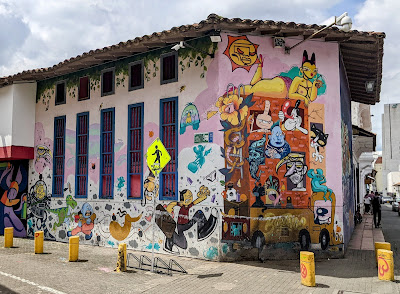



















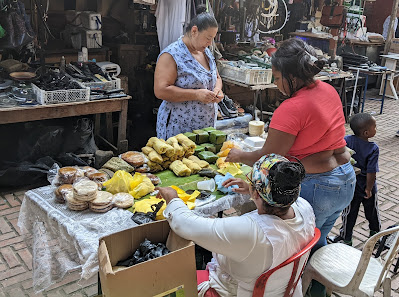

































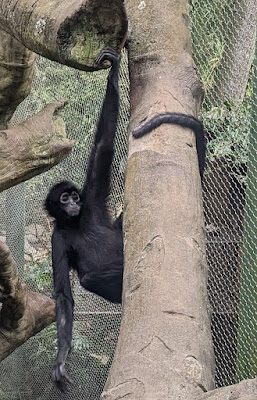











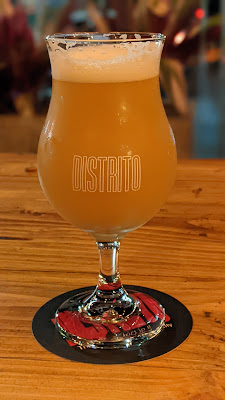

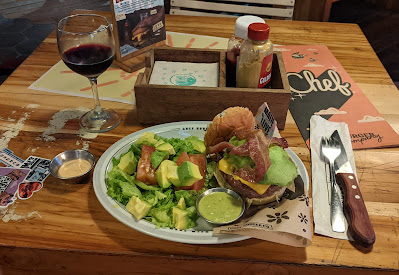



Qué buenas fotos! Espero conocer Cali en un próximo viaje. Linda ciudad. Qué gusto que sigas recorriendo el mundo y sumando cervecerías artesanales en tu historial. Un fuerte abrazo desde Lima!
ReplyDelete